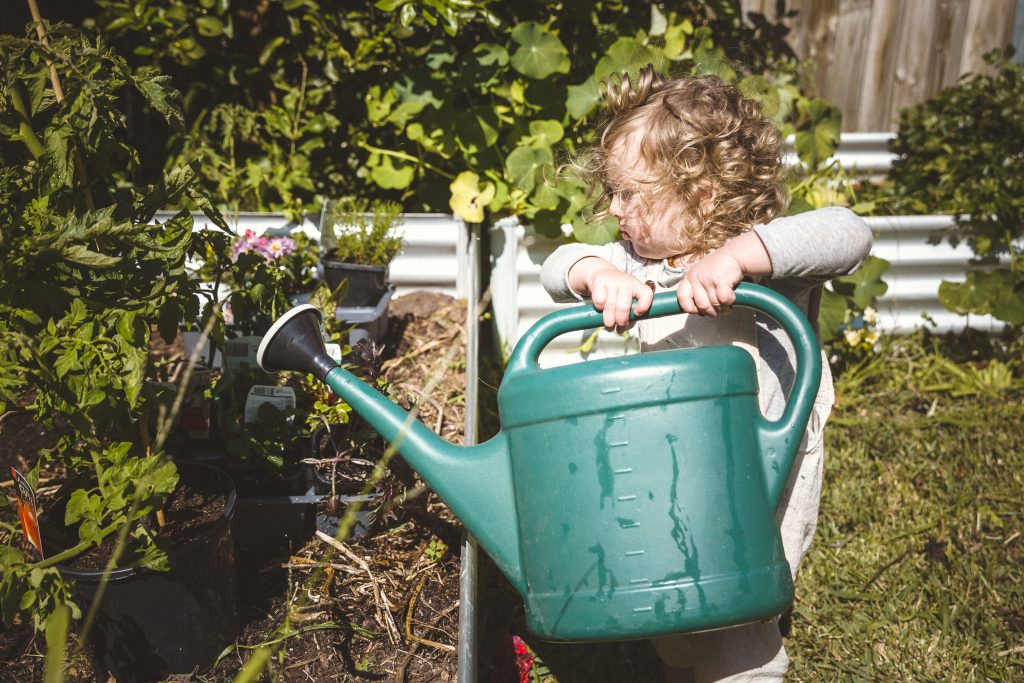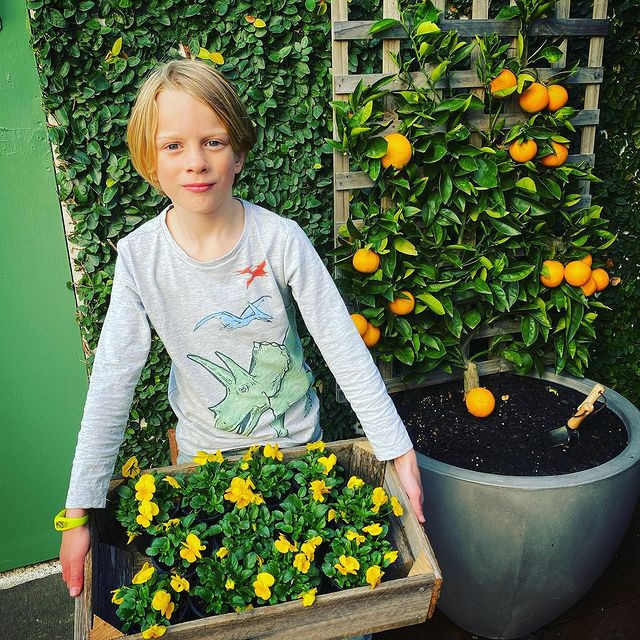
The past year has really put our need for nature front and centre. Greener Spaces Better Places’s latest research confirms that for three in five of us, getting outside in nature is more important than before the COVID-19 pandemic.
Gardening is an incredible way to engage kids with the natural world, engaging all their senses. And you don’t need a large yard to do it!
Dom and Dunc from The Plant Runner have joined us to share their advice on how to build a super easy micro-garden – fun for big and little kids alike.
Their top tip? Plant a flower and herb patch in a small, manageable crate. Building this mini garden will engage the kids’ senses; smell, touch, and once flourishing, taste – and best of all, it will slot nicely onto balconies, courtyards, or even a sunny kitchen bench!
What you need:
- A couple of old crates
- Seeds of choice
- Paddle pop sticks
- A marker
- Hessian sack or fabric
- Potting mix suitable for vegetables and flowers
Step #1: Line the box
Here we go! First up, line the box with something permeable – a material that will allow for good drainage. Hessian sacks are great because they are compostable, they hold the soil, and eventually they will break down. Your local nursery will sell these but alternatively, you can ask local produce stores if they have any old potato sacks. Coffee roasteries will have these too.
Step #2: Fill the box
Once your lining is good to go, grab the gloves and fill your box with a quality potting mix suitable for vegetables and flowers. If you’re unsure which soil is best, ask an expert at your local garden centre, as it’s important to get the foundation right. A good tip is to leave roughly two and a half centimetres of space from the top so that when you’re watering, it doesn’t overflow out of the crate.
Step #3: Plant your seeds
Now it’s time to plant your favourite vegetables and flowers. Most seed packets will come with a planting guide, so follow those guides before buying the seeds and when you’re planting. You can use your paddle pop stick to gently push your seeds into the soil. Then take your marker, write on the paddle pop stick what you’ve planted, and pop it in the soil so you can remember what you’ve planted.
Step #4: Water your seeds
Before you get too excited and leave your crate to flourish, don’t forget to give your little seedlings a drink! Sprinkle the soil with your watering can.
Pop the box in a sunny position and before you know it, with some love and care, your little spot of soil will transform into a thriving mini herb and flower garden both the kids and yourself can feel proud of.
Step #5: Raising your plants
Remember, gardens need regular love and attention. We recommend keeping an eye on these three things:
- Watering – your watering schedule will very much depend on your region, what you’ve planted, and the garden’s drainage. As a general rule, water your garden in the morning so it has moisture throughout the day, and water as frequently as needed to keep the soil moist (but not soaked).
- Checking for pests – to ensure your plants make it to your dinner plate, make sure pests don’t get them first. Here’s some of the common ones to keep an eye out for.
- Feeding – once you’ve kept your latest leafy friends alive for a few months, settled into a good watering routine and figured out exactly how much sun each needs, you’re ready for the next exciting level of plant care – plant feeding! Check out this blog post here for everything you need to know to feed those hungry pals.

Image credit and header image credit: Greener Spaces Better Places
